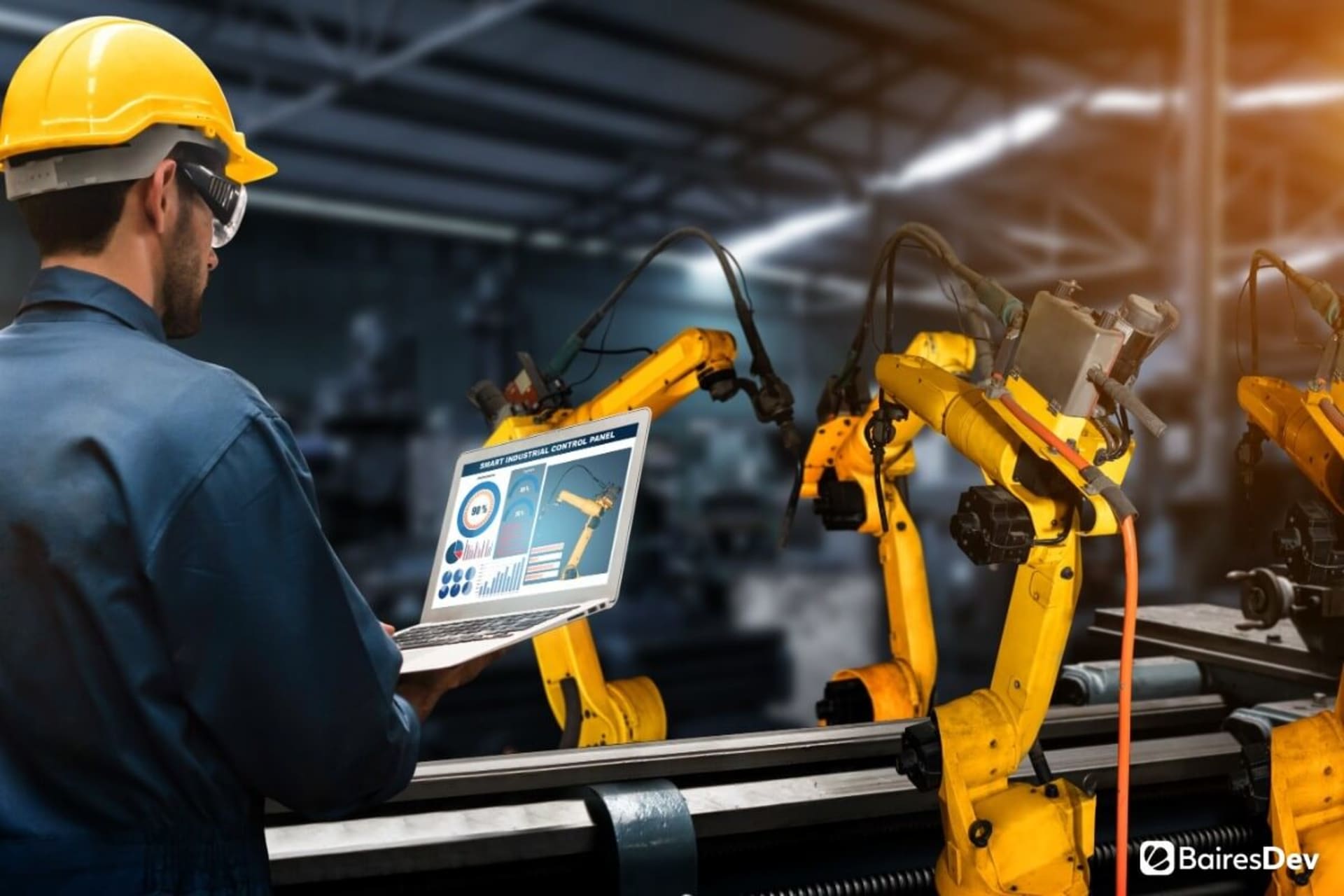Internet of Things (IoT) technology is the collection of connected devices that are becoming more common in our world. Home appliances, self-driving cars, and beacons that help retailers better understand customer behavior to provide more personalized service are just a few examples.
IoT technology has great potential to help professionals in many industries in addition to retail, including healthcare, pharmaceuticals, and agriculture. Using IoT devices, workers can become more efficient and effective in their work. Another industry in which IoT devices can be particularly useful is manufacturing. Starting with basics like inventory and asset management, the IoT can also support speed, product quality, worker safety, and supply chain visibility.
As IoT devices become more prevalent in both business and individuals’ everyday lives, manufacturing leaders are smart to look into how their companies can benefit from this breakthrough technology. Here, I examine several benefits manufacturing operations can derive from the IoT.
1. Cost-Cutting
IoT technology can help reduce costs in several ways. First, it can help you manage assets through the use of radio frequency identification (RFID) tags that can be attached to each asset, and readers that scan them at critical points in their lifecycle.
Tracking assets enables you to spend less on equipment repairs and make fewer CapEx investments over the long term. Better operating machines also means less downtime, which can interfere with your ability to deliver consistent service to customers.
Other cost-cutting features include more efficient inventory management to reduce carrying costs and search times, more agile operations to adjust to changing market demands, and more efficient energy use to lower overall expenditures.
2. Speedier Time-to-Market
The more efficient operations that are possible with IoT technology lead to faster, more predictable output to better meet customer demands. In one notable example, Harley Davidson completely reconfigured its York, PA, facility to enable all machinery and logistics devices to be equipped with sensors and location awareness. The factory reduced the lead time to produce customized motorbikes from a 21-day cycle to 6 hours.
Greater customization is of particular value in an age in which customers are clamoring for more personalization. IoT sensors allow manufacturers to maintain more diversity in production and inventory and to track it using real-time data.
Such enhancements can be used not only with customized products but also with standard ones, providing a more consistent service that leads to greater customer trust and loyalty. Given that customer experience (CX) is any company’s greatest asset today, even small improvements in this area can make a big difference in beating the competition.
3. Better Quality
Given that manufacturers must often choose between quality and cost, reducing costs through the use of IoT technology gives you more options for increasing quality. Additionally, better-calibrated machines may make the same process yield better results. Also, fine-tuning operations is fast and easy with sensors that can detect minor changes in machine functionality that can make a major difference in product quality.
Finally, IoT sensors can measure different things during the quality control process. Examples include thermal and video sensors that gather more complete product data. Products may also be tested at different stages throughout the development cycle to achieve a more thorough assurance of quality.
4. Improved Employee Experience
By measuring things like heart rate, fatigue, and movement, wearable devices can monitor workers’ health and alert them when they engage in risky behaviors that can lead to accidents. Additionally, IoT devices can be affixed to equipment to monitor it for dangerous conditions, alerting workers to fix any problems or clear the area before disaster strikes.
Employees can also benefit from device-generated data that shows productivity and the needs of each shift. So, things like removing people from a shift that’s overly crowded can give the remaining workers a greater sense of purpose, while adding them can give them a sense of support. Workers who are particularly productive can be identified to help others learn their techniques.
5. Supply Chain Visibility
Supply chain visibility entails in-house asset management on a broader scale, with information shared between manufacturers and supply chain components. Operators can find the location, status, and condition of each element, such as a product or package, at any given time during shipment. Manufacturers can find additional information, such as how many of the same product are also being shipped, and how many were produced within any given time.
This data can be particularly useful with sensitive products like drugs that must be kept at a certain temperature. What’s more – with the drugs, an IoT temperature sensor could detect that a cooling system within a truck is failing, giving the driver the opportunity to adjust it or use a backup system based on an alert.
6. Better Decision Making
Each IoT device generates data and manufacturers must be ready to manage it. The data analysis that takes place with these systems enables company leaders to gain insights into many areas of company operations. These insights can lead to improvements and better decision-making for such things as financial planning, scheduling, and supplier choices.
For instance, the quality of similar products from several different vendors can be tracked through the entire manufacturing process to determine which are associated with the fewest quality control problems. And more efficient asset management can help finance department personnel plan for needed equipment repairs and replacements.
The following video offers several good suggestions for using data to make decisions:
IoT Solutions Fit Every Size Operation
IoT devices can be used across operations of every size. Companies can start with one IoT system and move to another. In these ways, making use of the technology doesn’t have to be overwhelming or seen as more trouble than it’s worth. As employees learn how to use the software that interprets IoT data, they can be entrusted with greater complexity and efficiency, leading to ever-increasing benefits like those listed above.
If you enjoyed this, be sure to check out our other IoT articles.







